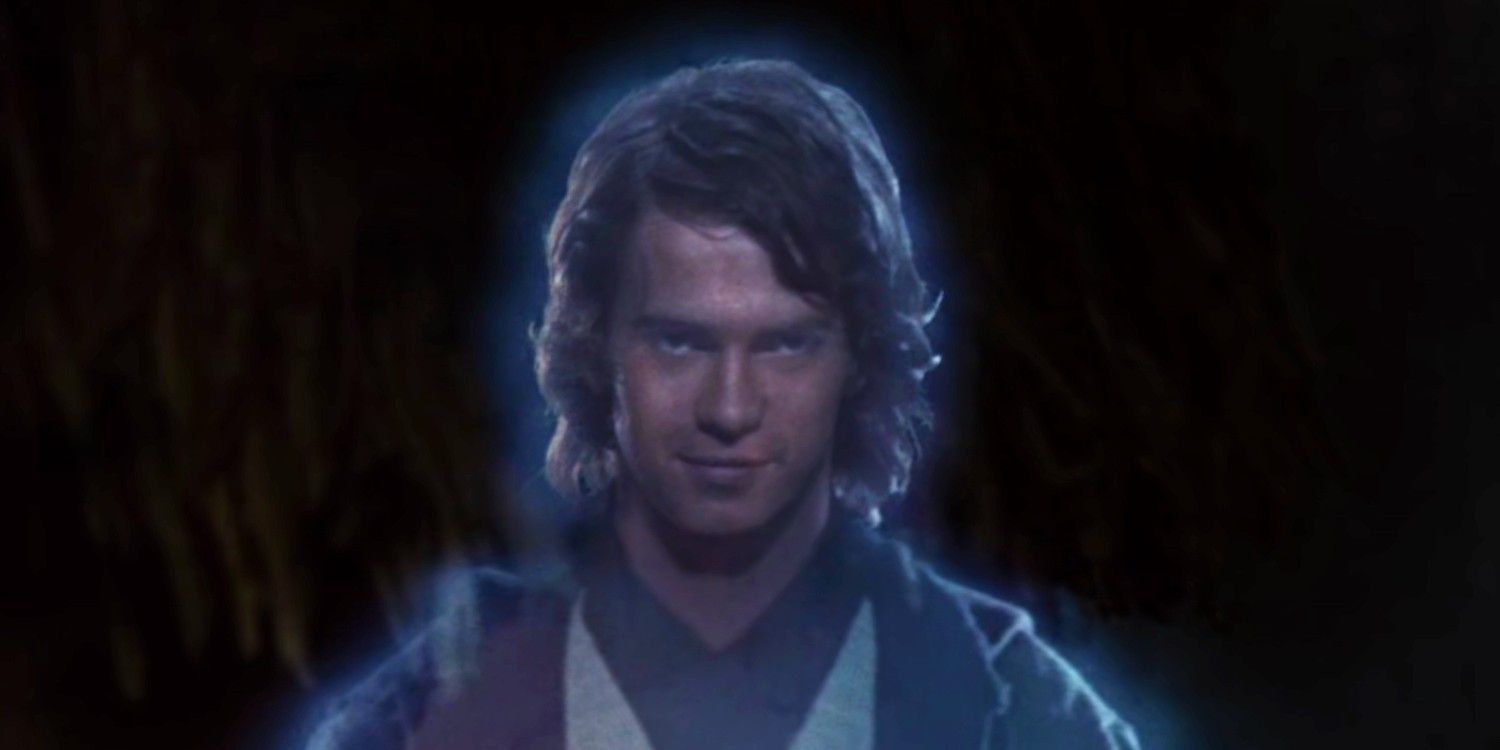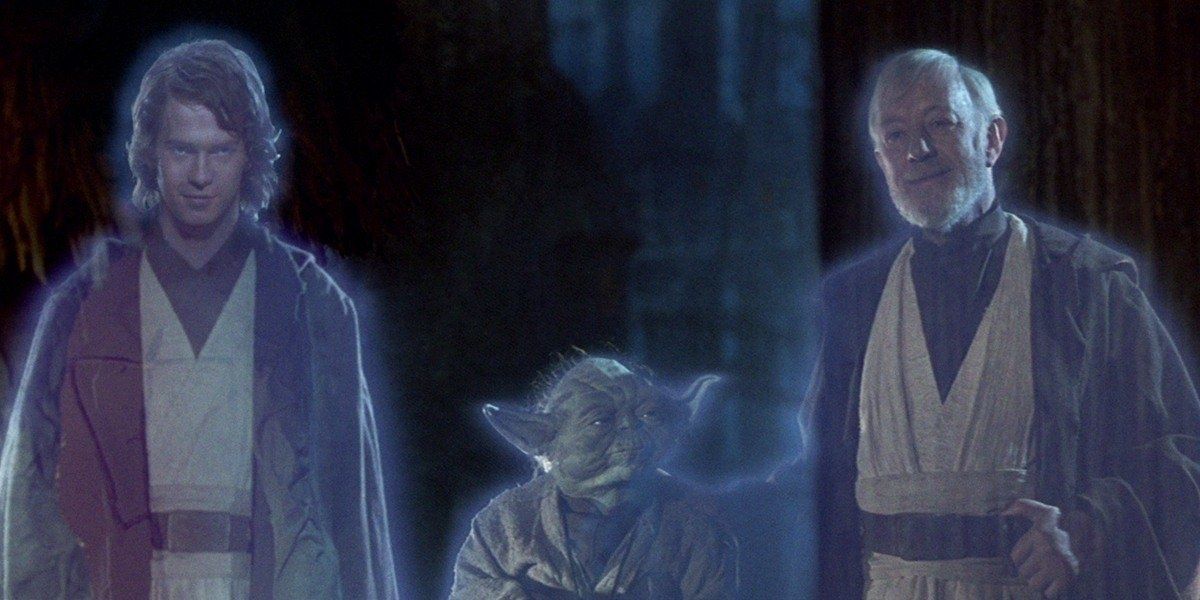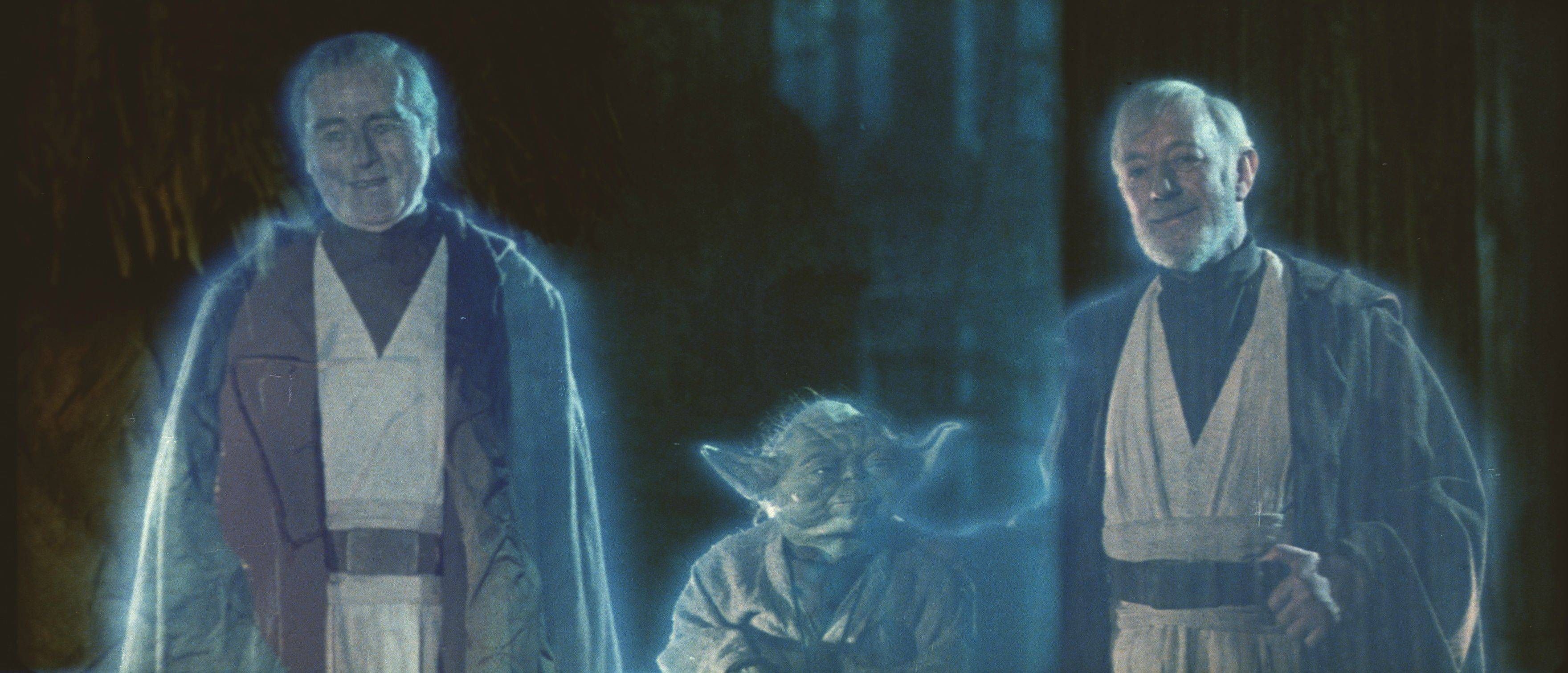
In 1983, the conclusion of the original Star Wars trilogy, Star Wars: Episode VI - Return of the Jedi, contained a scene that featured the Force ghosts of former Jedi congregating on Endor after the destruction of the second Death Star. Among those in the scene was Anakin Skywalker, who saved his son, Luke Skywalker, from Emperor Palpatine prior to his death. However, the only problem with this heartwarming scene of redemption and acceptance is that, canonically, it does not make much sense.
The ability to appear as a Force ghost is one of the many aspects of Star Wars canon that's changed since Return of the Jedi's release. While originally an innate ability, Star Wars: Episode III - Revenge of the Sith revealed that training was required to become a Force Ghost when Yoda told Obi-Wan that an "old friend" had "learned the secret to immortality." This “old friend” was the late Qui-Gon Jinn, who Darth Maul killed during the events of Star Wars: Episode I - The Phantom Menace. Later, Star Wars: The Clone Wars’ sixth season elaborated on this reveal with the episodes “Voices,” “Destiny” and “Sacrifice.” In these episodes, the deceased Qui-Gon speaks to Yoda, prompting him to go on a journey to discover how to retain his consciousness after death.

It is highly unusual for any individual to remain aware of themselves after they die and return to the Force. All living things return to the Force after death, and a Force ghost can only exist through the aforementioned training by a Force-sensitive individual dedicated to the light, meaning Sith Lords could not gain the skill. Anakin, who spent more than half his life as the sinister Darth Vader, probably did not train to retain his individuality in the Force like Obi-Wan Kenobi and Yoda, who appeared as ghosts with him in Return of the Jedi.
This leaves a big question as to just how Anakin was able to return as a Force ghost. Star Wars: The Life and Legend of Obi-Wan Kenobi, a junior novel written by Ryder Windham, explained that Obi-Wan called out to Anakin before he died and his consciousness faded into the Force. Obi-Wan told his former pupil that he could teach him to remain in corporeal space — not only because he considered Anakin to be the Chosen One, but also a friend.
While The Life and Legend of Obi-Wan Kenobi is no longer canonical, it does offer a way for Anakin to become a Force ghost. The possibility that Obi-Wan’s kindness and Anakin’s remorse allowed the characters to forgive one another while also allowing Luke a glimpse of the person his father once was is a sweet idea. However, as it is no longer canon, the question of Anakin's Force ghost remains unanswered. It is reasonable to assume that Anakin would only have been able to gain this ability either directly before his death in Return of the Jedi, or immediately after, as in The Life and Legend of Obi-Wan Kenobi, which does not give him much time to go through the elaborate process. The answer could lie in the fact that Anakin’s journey to becoming a Force ghost was simply different than the journey Obi-Wan and Yoda took.
While prior to his death Qui-Gon trained with the Shaman of the Whills to learn how to become a Force ghost, he died before he could finish his training, so he couldn't use the ability in the same way. Given the nature of Anakin’s appearance at the end of Return of the Jedi, it is possible that he is in a similar position to Qui-Gon Jinn. In the 2004 re-release of Return of the Jedi, prequels actor Hayden Christensen replaced original actor Sebastian Shaw, which was meant to reflect Anakin’s return to the light by showing him as he appeared when he was last recognizably Anakin. However, Anakin never speaks in this scene. In fact, the only time Anakin’s voice is heard after his death is in Star Wars: The Rise of Skywalker, with a small army of other dead or presumably dead Jedi. Anakin's presence in the sequel trilogy is a reminder that he did become a Force ghost alongside his former masters, and though he could have physically appeared in the sequels, his ghost has not been seen since Return of the Jedi.
Related: Star Wars: Clone Wars Almost Had a Different Ending for Anakin and Ahsoka

In the end, George Lucas probably wasn't thinking about the logistics of the ghosts in Return of the Jedi at the time of filming, and instead thought that Anakin’s presence would provide catharsis. Lucas said in the DVD commentary from Return of the Jedi that the "scene where [Luke] burns his father's body, it wasn't originally in the script," but he believed that the act gave "more closure in terms of Luke's relationship with his father." Lucas also mentioned that Anakin's appearance at end of Return of the Jedi was Anakin being "able to retain his original identity" and he attributes that to Obi-Wan and Yoda. What Anakin’s ghost was meant to do was succinctly close a chapter in the Skywalker saga, as he was redeemed in the eyes of his son. Lucas explained that it is “because of Obi-Wan and Yoda” that Anakin was able to do this, and for now that is about the best explanation canonically available.
However Anakin became a ghost, whether it was Obi-Wan's intervention or some other twist of fate, his presence in the film does provide the audience with the knowledge that Anakin is no longer Darth Vader by the end of Return of the Jedi. As mentioned earlier, a Sith cannot become a Force ghost, and Anakin's appearance beside Obi-Wan and Yoda solidifies his return to the Jedi and the light. So how Anakin became a Force host is ambiguous, but his redemption isn't.
0 Comments